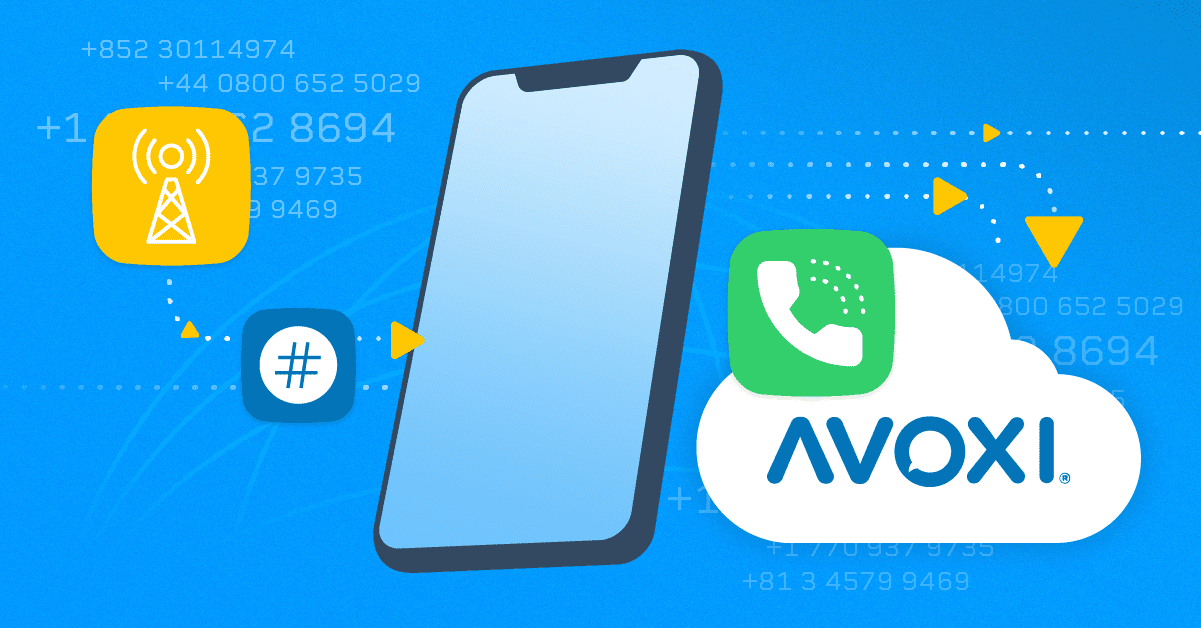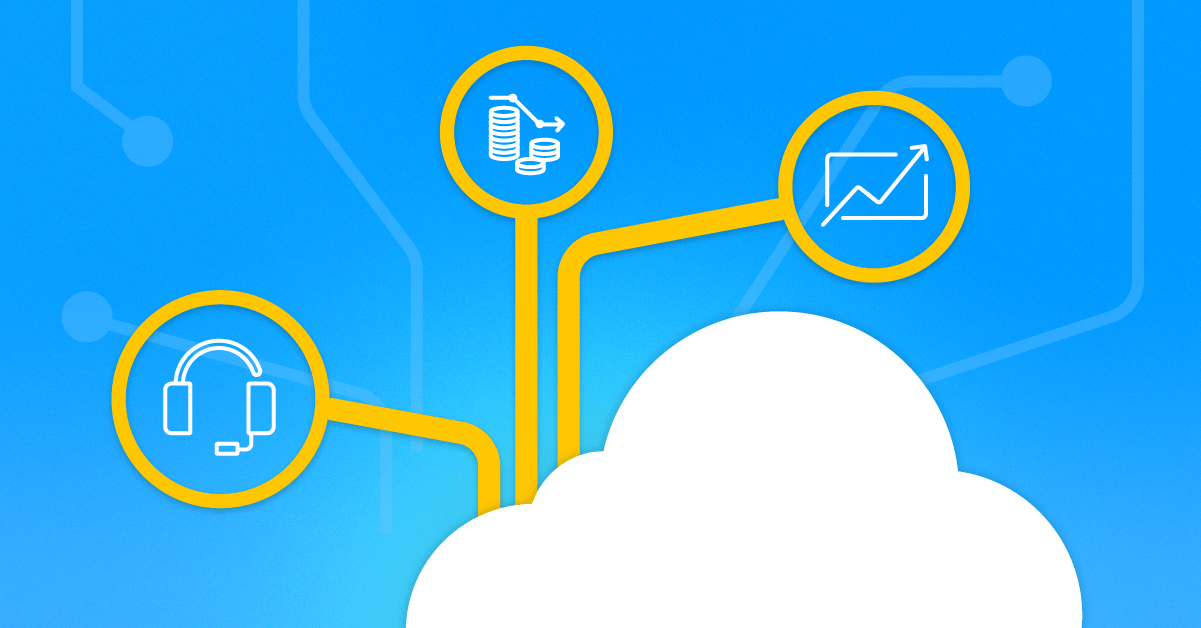What Is SIP Trunking? The Complete 2025 Guide
SIP trunking has become the backbone of how modern enterprises connect voice, video, and data across borders. It replaces outdated phone lines with flexible, cost-effective connections that support international telecommunications.
For global businesses, however, making phone calls is only half the battle. The true challenges lie in dealing with scattered vendors, inconsistent service quality, and the complexity of scaling communications worldwide.
When done right, Session Initiation Protocol (SIP) trunking can streamline your communications system, consolidate providers, improve diagnostics, and ensure business continuity no matter where your team—or customers—are located.
But what is SIP trunking, and how can it help improve your global voice infrastructure? This guide answers those questions and more.
Key takeaways
To start, here are key essentials every enterprise should know about SIP trunking and why it matters for global communications:
- Simplifies vendor consolidation: SIP trunking replaces multiple telecom carriers with a single provider, which centralizes Private Branch Exchange (PBX) and phone system management while reducing overhead costs.
- Boosts reliability and uptime: Enterprises gain built-in redundancy and failover routing, ensuring greater business continuity compared to traditional Public Switched Telephone Network (PSTN) connections.
- Provides global reach with local presence: A single SIP trunking provider can deliver numbers and coverage across regions, enabling scalable international expansion without the need for separate carriers.
- Enables seamless integration: Modern SIP trunking connects easily with cloud PBX, on-premise systems, and hybrid deployments, giving IT teams flexibility in managing voice services.
- Ensures cost efficiency with scalability: Unlike PSTN lines, which require physical provisioning, SIP trunks scale virtually, allowing businesses to pay only for the channels they need while supporting high call volumes.
What is SIP trunking?
Session Initiation Protocol (SIP) trunking is a method of delivering voice, video, and other real-time communications over the internet, entirely replacing physical telephone lines.
SIP trunking uses the SIP protocol to set up, manage, and terminate voice calls and multimedia sessions. Instead of paying for fixed phone lines, enterprises buy SIP channels—virtual paths that manage concurrent calls. These channels pool capacity across offices, regions, and users, allowing businesses to pay only for the volume they actually need.
SIP trunking vs. traditional telephony
Traditional telephony relies on physical Primary Rate Interfaces (PRIs) and Integrated Services Digital Network (ISDN) circuits that require dedicated lines to connect to the PSTN. These circuits lock businesses into fixed capacity and high maintenance costs, making scaling slow and expensive.
Here’s how SIP trunking differs from traditional telephony:
| Scalability | Instantly add or remove channels | Fixed, physical circuits |
| Hardware needs | Minimal, cloud-ready | Bulky, on-premises |
| Cost savings | Up to 50% reduction | Higher recurring costs |
| Remote/global use | Seamless PBX/UC integration | Limited flexibility |
How SIP supports global scalability
Businesses with a global presence can use SIP to connect remote offices and international teams through a single Voice over Internet Protocol (VoIP) network. This approach ensures consistent call quality, centralized management, and faster deployment across regions.
Additionally, SIP’s cloud-based model makes it possible to unify global communications under one strategy, giving organizations the agility to enter new markets quickly while maintaining reliability, cost efficiency, and enterprise-grade telephony features.
8 key benefits of SIP trunking for enterprise telecom leads
Here are eight key advantages global organizations gain when adopting SIP trunking:
1. Global vendor consolidation
With SIP trunking, enterprises replace multiple internet telephony service providers with a single partner.
The consolidation streamlines billing, ensures consistent call quality, and provides a unified support experience across all geographies. Instead of spending time negotiating countless local phone service agreements, enterprises work with one provider that delivers phone numbers, SIP channels, and outbound call routing worldwide.
2. Built-in diagnostics and monitoring
With traditional telephone lines, troubleshooting downtime can take days. SIP trunking eliminates this delay by embedding real-time monitoring and diagnostic tools directly into the service.
Leading solutions offer features like AVOXI’s Call Insights to proactively identify anomalies in voice traffic before they impact users. With this level of transparency, IT teams can pinpoint issues, maintain Quality of Service (QoS), and reduce the risk of unexpected outages.
3. Compliance and fraud protection
Enterprises can’t afford risks when dealing with telephony across multiple jurisdictions. Fortunately, SIP trunking uses security protocols such as Transport Layer Security (TLS) and Secure Real-Time Transport Protocol (SRTP) to encrypt voice calls and protect against eavesdropping and fraud.
AVOXI adds another layer with advanced fraud detection, automatic alerts, and regulatory compliance across 150+ countries. This ensures businesses stay ahead of potential telecom fraud while protecting sensitive customer interactions and meeting global regulatory requirements.
4. Lower infrastructure and long-distance costs
SIP trunking cuts telecom costs by eliminating physical lines and consolidating voice and data into one IP network. Enterprises replace expensive hardware with a scalable cloud model, which not only lowers recurring expenses and long-distance charges but simplifies operations by unifying internet and phone systems under a single infrastructure.
5. Remote work and deployment flexibility
SIP trunking allows organizations to seamlessly support distributed teams without complex installations. Employees can connect securely from any location with internet access.
Key benefits include:
- Faster deployment for new sites or remote teams
- Secure connectivity for remote workforces
- Centralized management that reduces IT overhead
6. Business continuity and failover capability
Enterprises adopt SIP trunking for maximum resilience and uptime. Through intelligent call rerouting, outages trigger seamless failover to backups, mobile devices, or alternative sites. This redundancy ensures 99.99% availability, protects revenue, and supports disaster recovery.
7. Unified communications integration
SIP trunking unifies enterprise communications by integrating voice, video, messaging, and file sharing into a Unified Communications (UC)-ready infrastructure. This capability boosts productivity, reduces costs, and eliminates silos.
Businesses can scale communications effortlessly, ensuring long-term ROI while streamlining workflows under one efficient platform.
8. Greener voice infrastructure with SIP
Traditional telecom setups require racks of hardware, heavy cabling, and power-intensive infrastructure. SIP trunking reduces environmental impact by shifting capacity to cloud-based systems and eliminating the need for excessive physical lines.
This streamlined setup lowers energy consumption and operating costs and supports enterprise sustainability goals, all while maintaining reliable, modern business phone services.
Why enterprises choose AVOXI for SIP trunking
Enterprises choose AVOXI for SIP trunking because it solves key pain points legacy telcos and many Unified Communications as a Service (UCaaS) providers struggle to address.
Global coverage in 150+ countries
Expanding internationally often means juggling multiple telecom providers, each with its own contracts, compliance rules, and variable service quality.
AVOXI offers a single SIP trunking service with phone numbers and voice connectivity across 150+ countries, including regions where legacy carriers have limited reach.
Built-in call insights and diagnostics
With built-in Call Insights, AVOXI tracks metrics like Mean Opinion Score (MOS), jitter, and packet loss in real time. Because these diagnostics extend across all voice traffic, AVOXI helps pinpoint issues before they cause disruptions. Enterprises gain full transparency into VoIP calls and Quality of Service, minimizing downtime and ensuring consistent customer experience across global operations.
Seamless CCaaS and UCaaS integrations
Many organizations hesitate to adopt new SIP trunking providers because migration often requires replacing existing systems or disrupting workflows.
AVOXI eliminates this concern by integrating directly with leading Contact Center as a Service (CCaaS) and UCaaS platforms, including Genesys, NICE, Five9, Amazon Connect, Microsoft Teams, and Zoom. This plug-and-play interoperability extends SIP trunking functionality without replacing existing communications systems, accelerating adoption and enabling a UC-ready infrastructure without downtime.
Managed porting and expert support
With AVOXI, businesses enjoy managed porting in 100+ countries, with dedicated onboarding managers guiding every step. This service is backed by 24/7 global support from telecom experts, ensuring smooth deployments and minimal disruption.
SIP trunking vs. alternatives
Enterprises weighing telephony options must evaluate SIP trunking against legacy and cloud-based alternatives. Each model has trade-offs that impact total cost, scalability, and global reliability.
SIP trunking vs. PRI lines
PRI has been the standard for decades, relying on physical circuits to connect PBX systems to the PSTN. While PRI provides predictable capacity, it locks businesses into fixed telephone lines, expensive maintenance, and slow scalability.
By contrast, SIP trunking replaces physical infrastructure with virtual SIP channels that run over an internet connection.
SIP trunking vs. hosted PBX
A hosted PBX outsources the entire Private Branch Exchange to a service provider. This model reduces in-house management and is well-suited for small businesses or companies with basic customization needs.
SIP trunking provides far more flexibility. Enterprises retain control of their telephony infrastructure, configure call volume and bandwidth as needed, and extend services across multiple regions.
SIP trunking vs. UCaaS platforms
While convenient, UCaaS solutions often rely on best-effort VoIP technology that may not deliver consistent call quality or continuity across international markets. They may also limit access to phone numbers in more remote geographies.
SIP trunking fills this gap by acting as the enterprise-grade voice layer beneath UCaaS. Enterprises can enjoy the collaboration benefits of UCaaS while maintaining the scale and resilience of a dedicated SIP trunking service.
How to implement SIP trunking
A thoughtful SIP trunking implementation plan minimizes risk, ensures compliance, and delivers immediate scalability from day one.
Plan your migration path
Phased rollouts reduce risk by gradually shifting traffic from legacy systems to SIP trunks. Start with non-critical call flows, capture early wins, and refine configurations before expanding enterprise-wide. This approach allows you to troubleshoot issues without jeopardizing customer-facing operations.
Consider managed porting and number availability
Porting existing phone numbers is often the most complex part of any migration. Inconsistent rules across countries can delay projects and create downtime risks.
AVOXI simplifies this process by offering fully managed porting in 100+ countries, providing access to both geographic and toll-free numbers in hard-to-reach markets.
Build in redundancy and failover
SIP trunking enables automatic failover routing, redirecting calls to backup paths when a primary route fails. For maximum resilience, configure redundancy across multiple regions and carriers.
With SIP, built-in monitoring and failover ensure voice calls, video conferencing, and multimedia communications run smoothly, even during unexpected outages.
Configure SIP for compliance and emergency services
Regulatory compliance is non-negotiable. SIP trunks must support E911 services in the US and equivalent emergency requirements globally. This ensures that emergency responders can locate and connect with callers accurately, even in a VoIP environment.
AVOXI provides pre-configured compliance safeguards and expert guidance on regional telecom regulations, helping you avoid penalties while protecting employees and customers.
When is SIP trunking not the best fit?
Here are a few scenarios where SIP may not be ideal:
When you need simplicity
Small businesses without an existing PBX often find hosted PBX or UCaaS to be more cost-effective. These options bundle call routing, failover, and multimedia features without requiring hardware or ISDN replacement.
When you don’t need global coverage
If your operations stay within a single country, regional carriers can deliver reliable phone service without the complexity of international call routing involved in global SIP trunking.
When IT resources are extremely limited
SIP setup and ongoing management require dedicated technical oversight. For companies with minimal IT staff, a fully hosted option reduces risk and ensures seamless reliability without straining resources.
Simplify global voice with SIP trunking
SIP trunking consolidates vendors, reducing complexity and delivering the reliability and scalability that global businesses demand, including international access to phone numbers, high-fidelity diagnostics, and seamless integrations.
AVOXI delivers by offering access to phone numbers in 150+ countries, proactive diagnostics, and seamless integrations with leading UCaaS and CCaaS platforms. With AVOXI, enterprises simplify their business communications system, protect against downtime, and expand voice services worldwide without disruption.
If your business is ready to reduce risk, lower costs, and scale confidently, request a demo to see what an enterprise-ready SIP trunking service can do for you.
FAQ about SIP trunking
VoIP is the technology for making voice calls over the internet. SIP trunking is a method for connecting your PBX (or phone system) to the PSTN using the SIP protocol.
Pricing depends on factors like call volume, geography, SIP channels, and the provider. SIP trunking saves enterprises significantly compared to PRI or traditional phone lines, achieving the greatest reduction on long-distance and international calls.
Yes. SIP trunking works with on-premises PBX systems, Internet Protocol PBX (IP PBX), and cloud-based platforms, allowing you to modernize without replacing infrastructure.
By eliminating physical lines, SIP trunking enables enterprises to instantly add phone numbers and expand their business communications globally through a single provider.
Additional Resources to Help You Get the Needle Moving

PSTN Replacement
Guide to Voice Termination Services

Retain Phone Number
International
Number Porting

Virtual Phone Line
Benefits of
SIP Trunking

